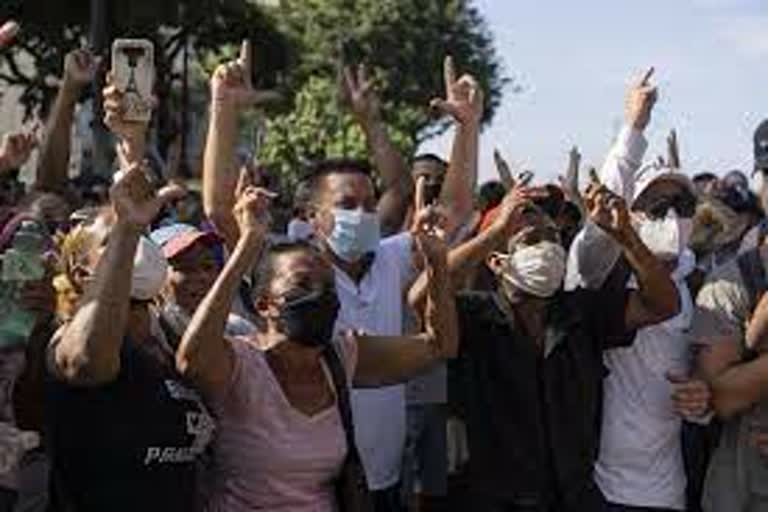Havana: Less than a week after a rare series of anti-government protests were broken up by police and government sympathizers, and elicited self-criticism from President Miguel Diaz-Canel, things appear calm in Cuba. But many wonder for how much longer? Squares and parks were occupied by government sympathizers with flags on Friday, and the circulation of traffic and people was normalising. But mobile internet data service – which authorities cut on Sunday – remained limited. “There is political and social erosion ... There is a lot of disgust, we must talk more, do more things and things that were done wrong should be rectified,” said Abel Alba, a 50-year-old civil engineer. “The president has tried to smooth things over a bit” but he waited “too long” to listen to the demands of the people in the streets.
The protests began Sunday when thousands of Cubans marched on Havana''s Malecon promenade and elsewhere to protest food and medicine shortages, power outages and some even calling for political change. The protests continued in smaller numbers into Monday and Tuesday. Diaz-Canel initially responded by looking for culprits, pointing to U.S. economic sanctions, the economic impact of the coronavirus pandemic and a social media campaign by Cuban American groups. But he later acknowledged some responsibility by Cuba''s leaders. With this in mind, Cuban Cabinet ministers announced a mix of measures including permits for travelers to import food and medicine without limits and allowing the emergency registration of Cubans'' supply books by people outside their place of origin.
“The Cuban government has just shown that it could have allowed the entry of food and medicine without quantity limits or tariffs all along but chose not to do so for more than a year of the pandemic,” wrote José Jasan Nieves, director of the independent digital newspaper, El Toque. “People twisted their arms.” Authorities reiterated their intentions to finish authorizing the operation of small and medium-sized companies as a source of employment as well as a program for state companies to pay more than the current salary scale. What officials also made clear is that they are not willing to make changes to the island''s political model. Street vendor Marlen Rodriguez, 66, was not optimistic following the government''s announcements. “There are no medicines, there is nothing, there is no food.”
According to Díaz-Canel, there were four sectors involved in the protests: radical supporters of the United States who waved that country''s flag during the protests and demanded a humanitarian intervention from Washington, criminal groups who took advantage of the situation to loot, people genuinely desperate due to the impact of the crisis on their daily lives and young who have no projects in society. The marches turned violent with police clashing with protesters, patrol cars being destroyed, shops looted, windows broken, stones thrown and violent arrests and injuries. Some Cubans were upset by the vandalism and groups of government supporters took to the streets and clashed with protesters.
Read: Raul Castro participates in political bureau meeting on protests in Cuba: Communist Party
